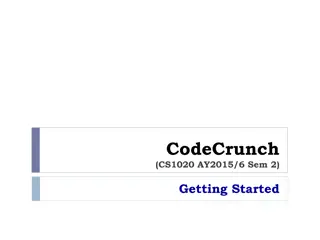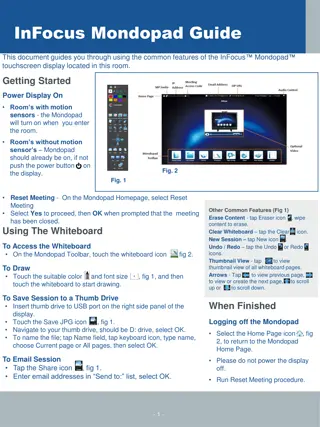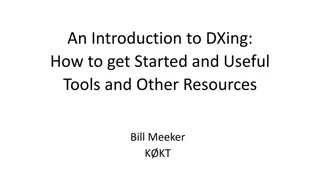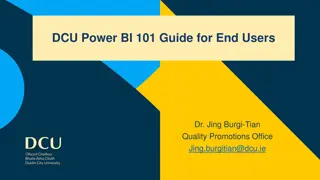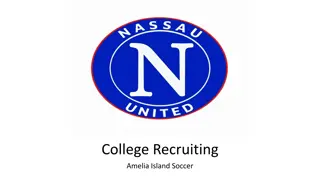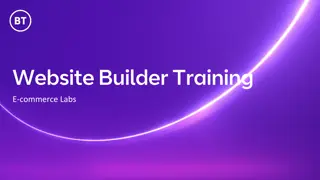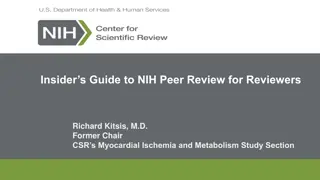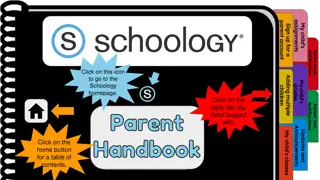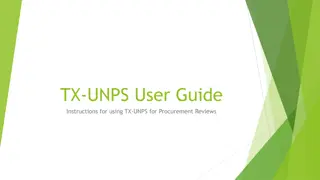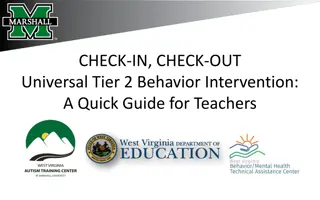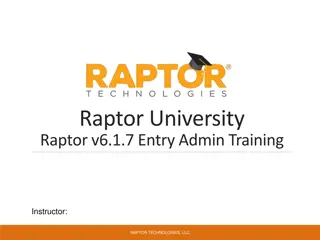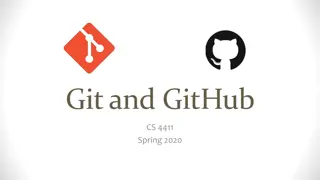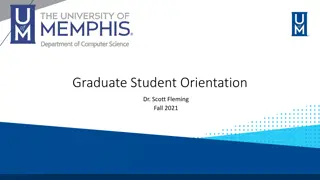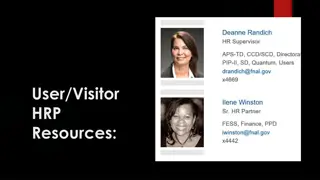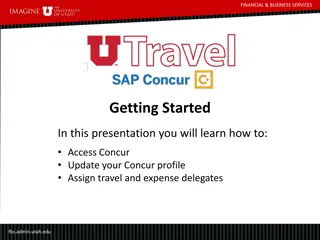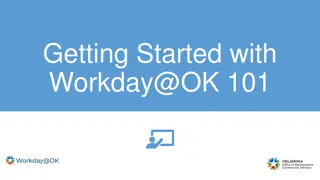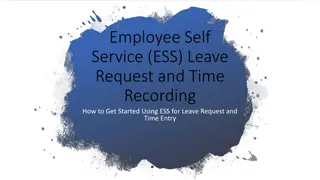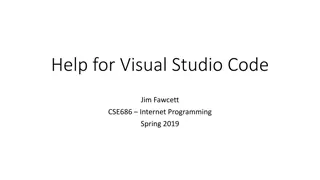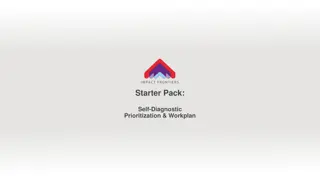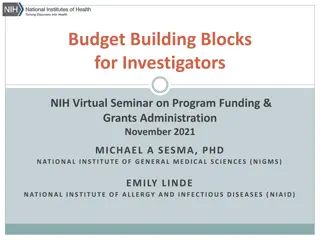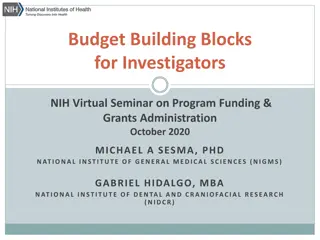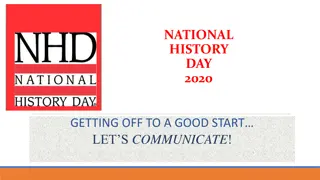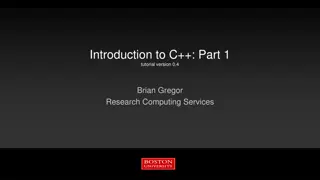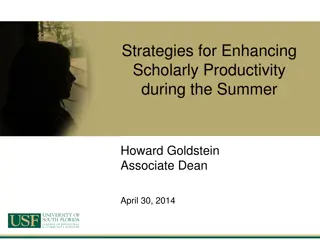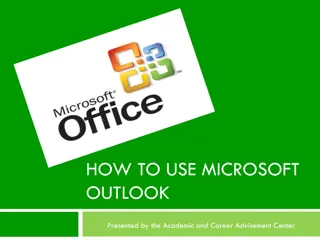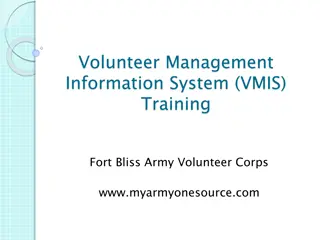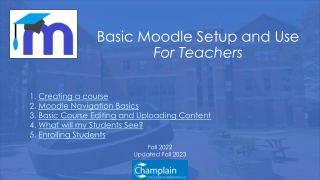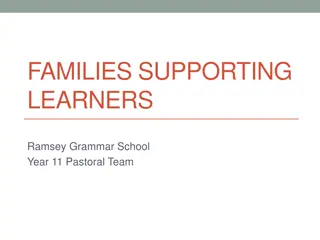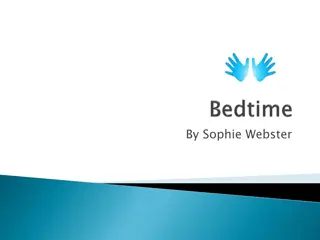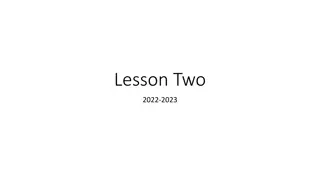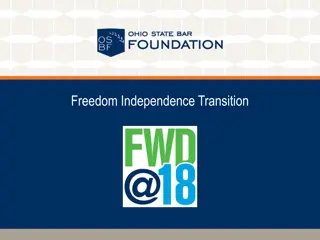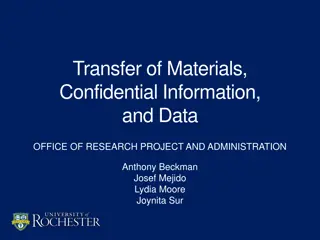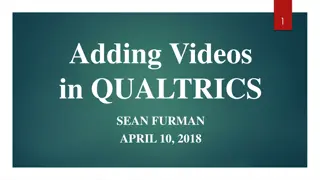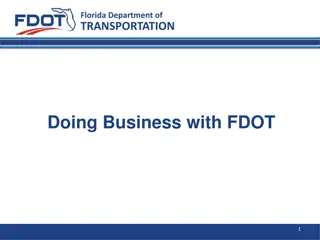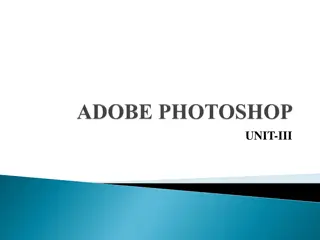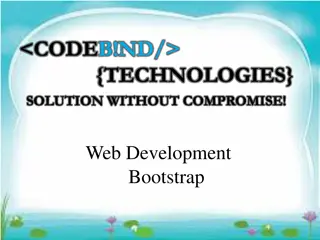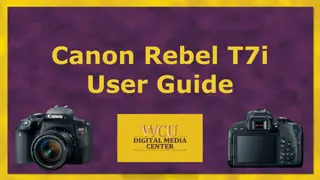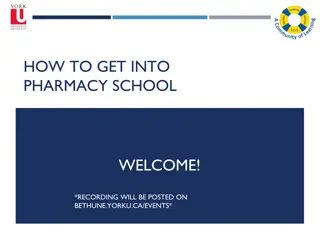Guide to eLibraryUSA: Exploring eSources and Getting Started
Explore the eLibraryUSA digital library with its nine electronic databases offering a wide range of content including newspapers, magazines, journals, videos, and dissertations. Learn how to utilize each database effectively and get started on your research journey at the American Spaces.
Download Presentation

Please find below an Image/Link to download the presentation.
The content on the website is provided AS IS for your information and personal use only. It may not be sold, licensed, or shared on other websites without obtaining consent from the author. Download presentation by click this link. If you encounter any issues during the download, it is possible that the publisher has removed the file from their server.
E N D
Presentation Transcript
Introduction to the eLibraryUSA Digital Library
Introducing eLibraryUSA eLIBRARYUSA (eLU) is a digital library with nine electronic databases (or e-sources) The databases include newspapers, magazines, journals, videos, and dissertations. All databases can be searched or browsed. Nearly all of the content is in English. The exception is the hundreds of newspapers and magazines in the PressReader database which are in the original languages. Information is both current and regularly updated. Currency is a standard of the databases. Access is onsite only at the American Spaces. Staff will provide access.
What are the eSources ? 1-3 1. PressReader a. b. Magazines and newspapers Learn how to use PressReader: https://care.pressreader.com/hc/en-us/articles/202547739- Quick-Start-Guide 2. Flipster a. Magazines b. Learn how to use Flipster: https://connect.ebsco.com/s/topic/0TO1H000000HHfUWAW/flipster?language=en_US 3. Academic OneFile a. Peer-reviewed journals b. Learn how to use Academic OneFile: https://elibraryusa.state.gov/databases/Academic%20OneFile
What are the eSources? 4-6 1. JSTOR a. b. Peer-reviewed journals, book chapters Learn how to use JSTOR: https://guides.jstor.org/for-librarians 2. ProQuest Dissertations and Theses Global a. Dissertations b. Learn how to use ProQuest: http://proquest.libguides.com/proquestplatform 3. Gale: Middle School a. Journals, newspapers, magazines b. Learn Gale: Middle School: https://go.gale.com.vlib.interchange.at/ps/start.do?p=MSIC&u=wash89460
What are the eSources? 7-9 1. BookFlix a. b. Books and videos for beginner English readers. Introduction to BookFlix: http://teacher.scholastic.com/products/bookflix/#/ 2. Gale: Opposing Viewpoints a. Newspapers, Magazines b. Learn how to use Gale: Opposing Viewpoints: https://go.gale.com.vlib.interchange.at/ps/start.do?p=OVIC&u=wash89460 3. Kanopy a. Videos b. Learn how to use Kanopy: https://help.kanopy.com/hc/en- us
Guide to Using eLibraryUSA Step 1
Step 1: Getting Started Get familiar with each eSource. Take a few minutes to learn: a. Content: Most databases include a statement about the database content. You can also refer to the eLibraryUSA brochure for a summary of content. Formats: Formats are usually full text (complete document) or abstract(summary). Navigation: How to move through the database contents and search results. Search Engine: eLU can be browsed or searched. Each database has its own search engine. It is helpful to know Boolean operators if you want to understand how the search engine functions. b. c. d.
How to Search eLibraryUSA Step 2
Academic Journal Searches First, determine what kind of search you need to conduct: Known Item Search you know the item exists. This could be a magazine or newspaper article you read, or someone told you about. You know the title, author, or subject. Unknown Item Search you do not know if documents exist on your topic. Basic research is searching for unknown items.
Known Item Search There are four types of Known Item Searches Title: you know the title or part of the title Author : you know the author of the document Keyword: you have at least one term Hyperlinks: direct links to documents or subjects
Known Item Search (2) Title Search Ex: A newspaper article you want to read includes the phrase tourism entrepreneurs Search Steps: Navigate to ACADEMIC ONEFILE Select advanced search option Enter in tourism entrepreneurs in the search box Note: if the term appears in a drop-down menu, you can simply select it Select document title from the drop-down menu Under Showing Results For at the top of the screen, select News
Known Item Search (3) Author Search Search by creator of the work Example: a document called Democracy by Michael Smith Search Steps: Navigate to JSTOR In title box search for Democracy . In the Author box, enter Michael Smith
Known Item Search (4) Keyword Searches Limit keyword searches to searches where the term is not a common one. For example, a person, company, organization, or a special term. Note that the keyword search option is often the default search option. Tip : Database filters are helpful aids for more precise searches and results. Filters help users narrow the volume of their results. Look for filters such as dates, publication name, subjects and search within results options. Search steps: Database: JSTOR. Select Advanced Search in the top left bar, then view the additional search options.
Known Item Search (5) Hyperlinks Depending upon the database you search you may find hyperlinks to documents or subjects in your search results. Use the hyperlinks to narrow or broaden your search results. Example: Hyperlinks are useful for finding related articles or authors. Search Steps: Navigate to JSTOR Search Michael Smith Scroll through and select any hyperlink you see for an author. You will see other publications by that author.
Unknown Item Search You have a subject or topic you want to research, but do not know what and how many documents exist on your topic. Basic research is searching for unknown items. There are three basic kinds of unknown item searches Browsing Subject Guides Boolean Searching/Boolean Operators
Unknown Item Search (2) Browsing A popular starting point for unknown items. Look for the browse option in the database. It may be labelled Browse Topics or Browse by Discipline or just Browse. Find the browse option on an eLibraryUSA database Search Steps: Navigate to JSTOR Above the search box, hover the mouse over Browse Select to browse by Title . See that you can browse by title of journals, books, research reports, and pamphlets
Unknown Item Search (3) Subject Guides Another way to begin research or search for unknown items is to look for subject listings. Example:You want to know how solar panels conserve energy. Select database: Academic OneFile Select Subject Guide Search (under Search Tools ) Go to Subject Search Guide Enter solar panels Click on subdivisions View the list of subtopics under solar panels. This gives more precise results.
Unknown Item Search (4) Boolean Searching/Boolean Operators Usually encoded within search engines. Many people are not familiar with Boolean operators or how they work, yet they are essential to understanding the mechanics of database searching. For an explanation of Boolean searching, watch this video by Kate Cushon from Regina University: https://youtu.be/jMV7X3W_beg. Example: The best way to illustrate Boolean operators is by comparing two searches. Search Steps: Navigate to Academic OneFile Search first Michael AND Smith , then search Michael Smith . Compare your results.
Explaining eLU to American Spaces Visitors Step 3
Key Phrases eLibraryUSA (eLU) is a digital library. It contains nine commercial resources with journals, magazines, newspapers, dissertations and videos. All of the databases are searchable. eLU is funded by the U.S. government for exclusive use in the American Spaces worldwide. The databases in eLU are commercial resources The databases are found in public, university and business libraries in the United States. There is a guaranteed quality with fee-based resources. Commercial resources are known for their quality, including accuracy and currency (are up-to- date).
Frequently Asked Questions Why were these resources selected for eLU? The resources in eLU are also in public, academic and corporate (business and law firms) libraries in the United States. These databases meet the standards of information specialists, experts and professionals in North America and Europe. The content of these resources is not in any way changed for use in the American Spaces. Why are these resources offered for visitors to American Spaces ? Many visitors to our global network of American Spaces are interested in studying in the United States. Students who plan to study at colleges in North America benefit from learning to use eLU databases before they enter a college or university abroad. Since these are standard resources found in most every academic library in the U.S. students will be better prepared when they start.
Frequently Asked Questions (2) Why are these resources offered for visitors to American Spaces ? We know from surveys of visitors to our Spaces, that they are interested in learning about U.S. history, culture, society and learning English. Why do these resources cost money? The resources cost money because the producer of the content paid for professional staff to write the content, to have it fact-checked, edited, and reviewed by experts. The publisher also pays for the information to be digitized and searchable, that is, the ability to access the content by using a search engine. In addition, content is regularly reviewed and content added or removed from the database.
Frequently Asked Questions (3) What about using Google or the Internet for research instead? One of the best internet search engines worldwide, Google is an open path to the universe of information. The content accessed by the Google search engine is a mix of both free content and fee-based content. Tip: Is there a question that you frequently receive from visitors that you are unsure of? Share it on the American Spaces Facebook group so other spaces can see the answer!
Marketing eLibraryUSA Step 4
Tips for Marketing eLU Advertise! Your American Space should advertise what eLibraryUSA is, that it is free, that use is on- site only; and staff will log users on to the databases. Do not limit advertising to a brochure. Brochures are small and can be easily overlooked. Make an attractive sign. Hold regular introductory sessions. Tip: Find the magazines from your country (or other countries) on PressReader. Print out a screen shot of the magazines and use it to advertise eLU.
Tips for Marketing eLU (2) Show How eLU Appeals to Different Interests a. Introduce the scope of eLU in ways that fit and appeal to your audience. For youth, you could say: Find out what is happening in the world. Browse a fashion magazine. Learn about the latest tech gadgets. Read about a new scientific experiment. Watch a video. Learn some English. Research a topic that you are curious about. Tip: Browse through BookFlix. Think of how you could market this to young beginning English speakers.
Tips for Marketing eLU (3) Use eLU to Teach Good Research Habits (especially for students) a. To find a simple fact, for example, the year Albert Einstein was born - Yes, use Google! But if you are doing serious research commercial databases are a better option than Google/Internet. Training Tip: Show results from a Google search that yields incorrect or too many results. Demonstrate the same search in an eLibraryUSA database.
Tips for Marketing eLU (4) Use eLibraryUSA in media literacy presentations a. Introduce credibility as a standard for publications. Explain/show citations and the requirement of crediting and citing to credible sources, such as experts and prior publications. Tip: Write down a search in which the internet does not yield results as well as eLU. Keep this by your desk for quick reference.


